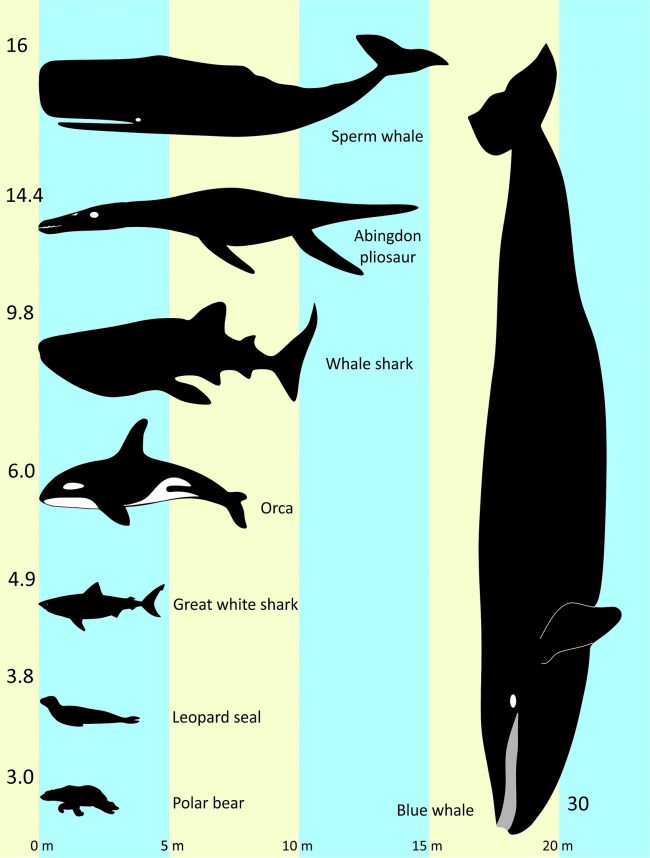
Giant reptile swam in Jurassic seas
Scientists examining fossils at Abingdon County Hall Museum in England came upon four large vertebrae from the Jurassic age. Initially, these fossils came from an excavation at the River Thames Valley in Oxfordshire. They are in a clay deposit that dates to the Late Jurassic, some 152 million years ago. The scientists, led by David Martill and Megan Jacobs of the University of Portsmouth, identified them as closely related to pliosaurs. Then, on May 10, 2023, they announced that these large bones indicated that pliosaurs could have been as large as 47 feet (14.3 meters). As Martill said:
It’s wonderful to prove there was indeed a truly gigantic pliosaur species in the Late Jurassic seas.
The scientists published their peer-reviewed research in the journal Proceedings of the Geologists’ Association on May 10, 2023.
Portsmouth palaeontologists have found four ENORMOUS vertebrae, which prove that #pliosaurs could have grown to twice the size of a killer whale! #fossilfriday #fossils #palaeontology @portsmouthuni
Read the full story here: https://t.co/OrdmVMW6zR pic.twitter.com/RuPsW6oAyK
— University of Portsmouth News (@UoP_Media) May 12, 2023
What are pliosaurs?
Generally speaking, pliosaurs are prehistoric reptiles that were similar to plesiosaurs, a common marine reptile of the time period. However, pliosaurs had a bigger, elongated head with a shorter neck. Also, they sported four flippers and a short tail to help them paddle and maneuver through the seas.
The team used topographic scans to calculate a size range for pliosaurs of 32 to 47 feet (9.8 and 14.3 meters). Indeed, as you can see from the chart, this length would put them in the range of today’s whale sharks and larger.

Pliosaurs ruled the seas
Martill describes these prehistoric reptiles:
We know these pliosaurs were very fearsome animals swimming in the seas that covered Oxfordshire 145-152 million years ago. They had a massive skull with huge protruding teeth like daggers, as big – if not bigger than – a T. rex, and certainly more powerful.
But, despite it living in the Jurassic age and the comparison with a T. rex, Martill cautioned:
Please do not call it a dinosaur. That would be like calling a mouse cattle or a cat an elephant.
So, these prehistoric reptiles were larger than scientists previously thought and were dominant in Jurassic seas. As Martill said:
They were at the top of the marine food chain and probably preyed on ichthyosaurs, long-necked plesiosaurs and maybe even smaller marine crocodiles, simply by biting them in half and taking chunks off them. We know they were massacring smaller marine reptiles because you can see bite marks in ichthyosaur bones in examples on display in The Etches Collection in Dorset.
Bottom line: Scientists have discovered that giant reptiles of the Jurassic period – known as pliosaurs – could have been up to 47 feet in length.











